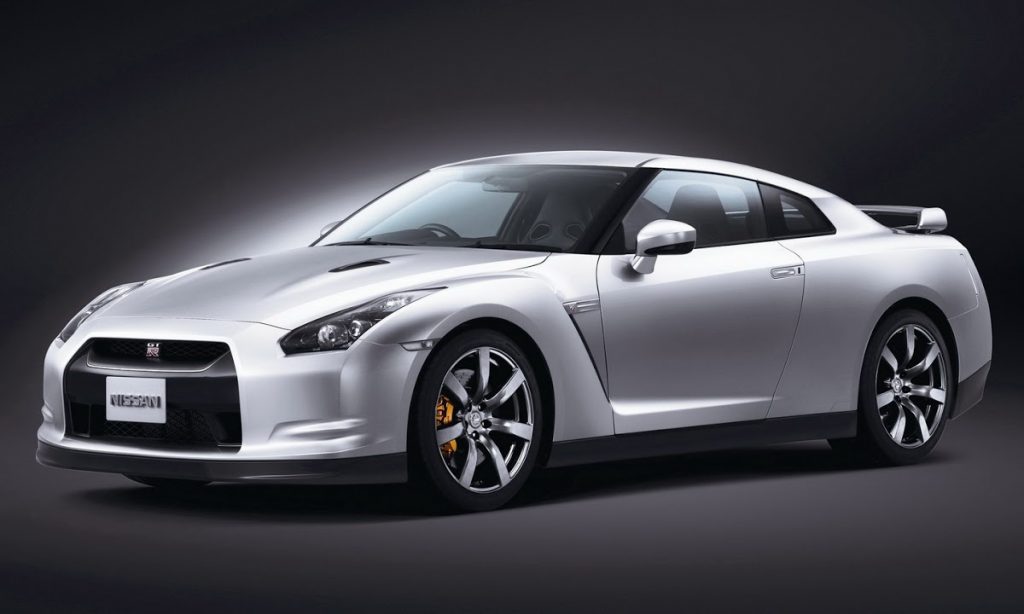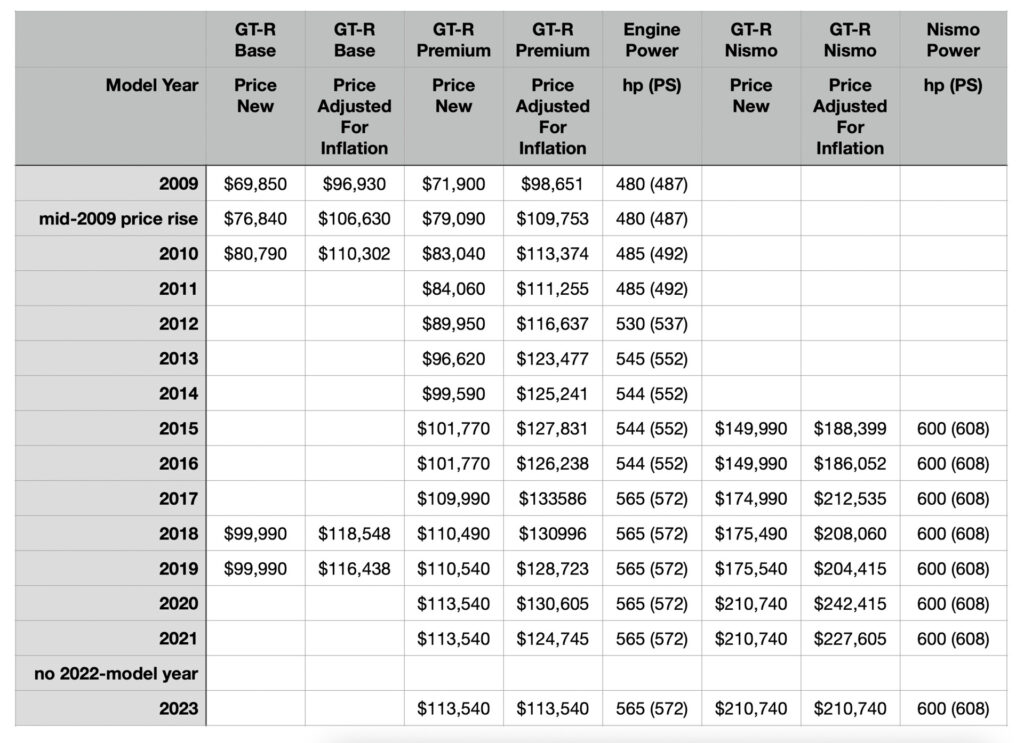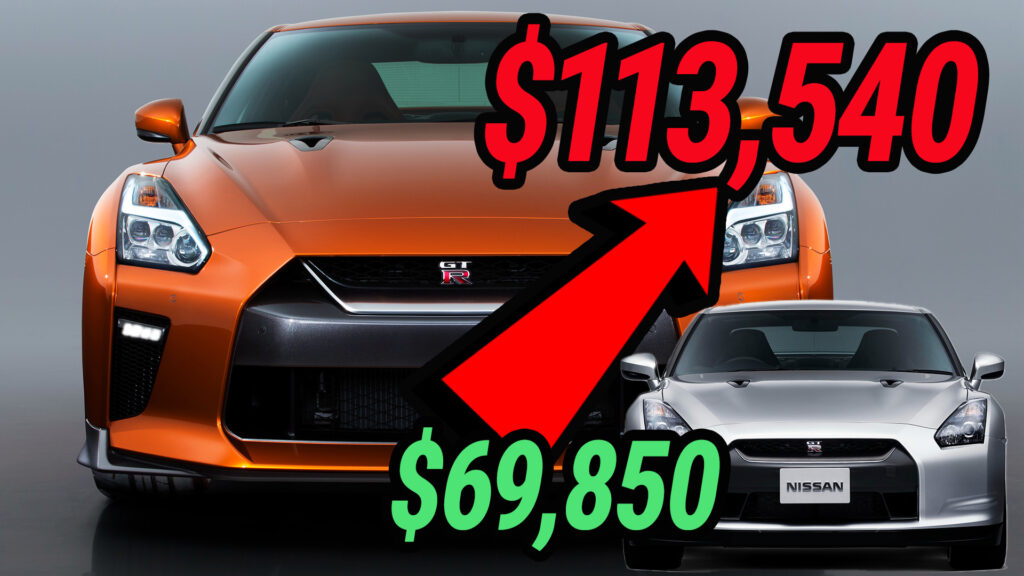So the Nissan GT-R lives on for another year. This week Nissan in Japan unveiled the 2024 model-year car, which gets a subtly revised face, and slightly more downforce, but is in most respects unchanged from the 2023 car, or the 2009 original, come to that.
But one thing that has changed over time is the GT-R’s price. When the R35 first appeared it wasn’t only its 911 Turbo-grade performance that caused jaws to drop, but the fact that it was available for less than the cost of an ordinary 911 Carrera. The earliest 2009 model-year GT-Rs sold in the U.S. were priced at $69,850 (plus $1,000 destination) for the base car and $71,900 for the better equipped Premium model.
Fourteen model years later it’s not uncommon to hear people griping that while the GT-R might still be great, it hasn’t changed enough, and more importantly, it’s now too expensive. The least costly 2023 GT-R will set you back $113,540, an increase of 62 percent over 2009, and the destination charge has climbed almost 90 percent to $1,895.
Related: 2024 Nissan GT-R Is Oh So Familiar, But Gets Special Editions And Minor Styling Tweaks

But is that really the whole story? We dug through the U.S. launch info for each GT-R between 2009 and today to look at the lineup and prices for every season, then adjusted those prices using the U.S. Inflation Calculator website to convert them into modern dollars to see which cars offered the best value. The calculator uses Consumer Price Index data from the U.S. government to adjust figures to December 2022 levels.
Inflation has been in the news recently because it was hitting double figures, but in the years when it’s not hitting the headlines it’s easy to forget that it’s still running at around 2 percent, meaning the price of everything rises every year, including cars.
One of the other key facts that potentially skews people’s perception of the GT-R’s value is that Nissan started off with a two-tier Base and Premium GT-R lineup, but dropped the base car after 2010. It then reintroduced it under the Pure name for 2018 and 2019, before retiring it again.

So what can we tell from the table above? The first thing that strikes us is that the people who got their hands on the very first 2009 cars in late summer 2008 got an absolute bargain. Nissan adjusted its prices upwards that September citing increases in material costs, though it was probably also blown away by demand and kicking itself for not pricing the car higher to start with.
We can also see that today’s 2023 GT-R Premium looks like pretty great value after all, even at $113,540. That price makes it $20k cheaper in real terms than the 2017 Premium (which introduced the current 565 hp / 572 PS engine), and more affordable even than the 2018-19 base-spec Pure cars. And because Nissan has held the price at $113,540 since 2020, the car has offered more value every year since. The GT-R Premium has been better value than it is today, but not since 2011.

Related: Nissan Nismo CEO Confirms Standalone Hybrid Sports Car
And what about the GT-R Nismo? That was best value in 2016, a year after its introduction because Nissan carried the $149,990 price over from 2015. The Nismo gained a new look for 2017 along with the rest of the range, but also ballooned in price to $174,990, or $212,535 in modern dollars. Then 2020 brought another huge leap in price to an eye-watering $210,470 ($242,415 today) when the Nismo was upgraded again with GT3 turbos and carbon brakes. The flagship GT-R hasn’t changed much since, but neither has its price, meaning it’s more affordable in real terms.
We’ll have to wait to see what Nissan does with prices for the 2024 car. Although the 2024 GT-R was announced in Japan this week, and should be in U.S. dealerships this spring, America’s 2023 car was only released in November so we’ve got a little while to wait to find out how much the next one will cost.




